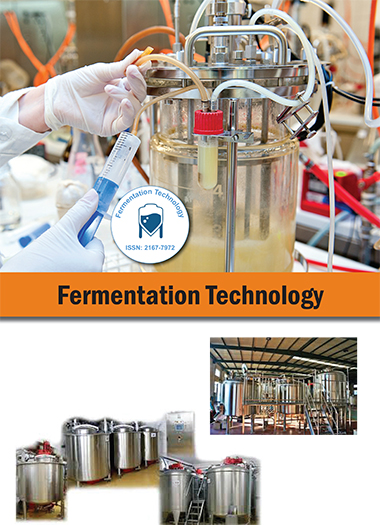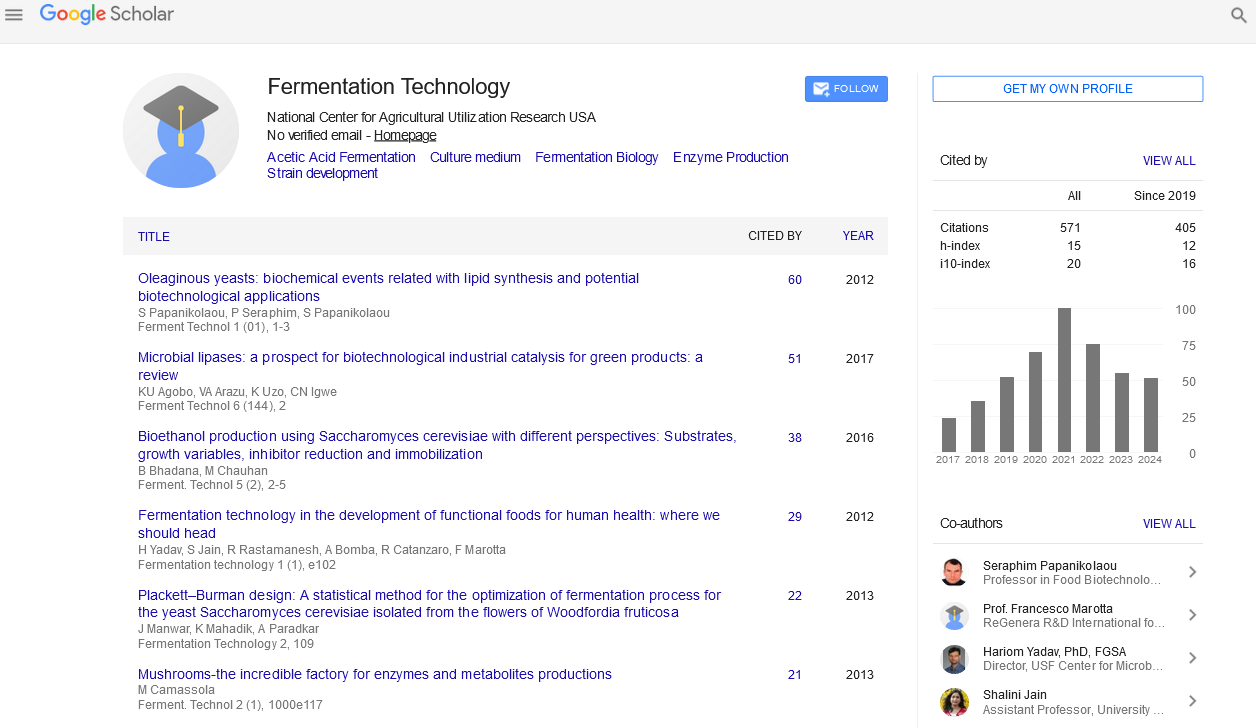Indexed In
- Open J Gate
- Genamics JournalSeek
- Access to Global Online Research in Agriculture (AGORA)
- RefSeek
- Hamdard University
- EBSCO A-Z
- OCLC- WorldCat
- Publons
Useful Links
Share This Page
Journal Flyer

Open Access Journals
- Agri and Aquaculture
- Biochemistry
- Bioinformatics & Systems Biology
- Business & Management
- Chemistry
- Clinical Sciences
- Engineering
- Food & Nutrition
- General Science
- Genetics & Molecular Biology
- Immunology & Microbiology
- Medical Sciences
- Neuroscience & Psychology
- Nursing & Health Care
- Pharmaceutical Sciences
Opinion Article - (2023) Volume 12, Issue 1
Exploring Sucrose Fermentation: Microorganisms, Biochemical Pathways, and Applications
John Lee*Received: 03-Mar-2023, Manuscript No. FMT-23-20923; Editor assigned: 06-Mar-2023, Pre QC No. FMT-23-20923(PQ); Reviewed: 21-Mar-2023, QC No. FMT-23-20923; Revised: 28-Mar-2023, Manuscript No. FMT-23-20923(R); Published: 07-Apr-2023, DOI: 10.4172/2167-7972.23.12.166
Description
Sucrose fermentation is a process that involves the conversion of sucrose into ethanol and carbon dioxide by certain types of microorganisms, such as yeasts and bacteria. This process has a variety of applications, ranging from the production of alcoholic beverages to the industrial production of biofuels and other chemicals. In this article, we will explore the science behind sucrose fermentation, including the microorganisms involved, the biochemical pathways, and the applications of this process. Sucrose fermentation is typically carried out by microorganisms such as yeasts and bacteria. Among the most common yeasts used in sucrose fermentation are Saccharomyces cerevisiae and Zygosaccharomyces rouxii, while bacteria such as Zymomonas mobilis and Acetobacter xylinum are also known to be capable of carrying out this process. Saccharomyces cerevisiae, also known as brewer's yeast, is a single-celled fungus that is commonly used in the production of beer, wine, and bread. It is able to ferment sucrose by breaking it down into glucose and fructose, which are then converted into ethanol and carbon dioxide. In the presence of oxygen, S. cerevisiae can also convert ethanol into acetaldehyde, which is further oxidized into acetic acid. Zygosaccharomyces rouxii is yeast that is capable of sucrose fermentation. Unlike S. cerevisiae, it is able to ferment sucrose directly without first breaking it down into glucose and fructose. Z. rouxii is commonly used in the production of sweet wines and fortified wines, as well as in the production of certain fermented foods such as soy sauce and miso. Zymomonas mobilis is a bacterium that is known for its ability to ferment sugars at a very high rate. It is able to ferment a variety of sugars, including sucrose, glucose, fructose, and maltose. Z. mobilis is commonly used in the production of biofuels such as ethanol, as well as in the production of other chemicals such as lactic acid and pyruvic acid. Acetobacter xylinum is a bacterium that is capable of producing a type of cellulose known as bacterial cellulose. This cellulose is produced by the fermentation of sucrose, which is broken down into glucose and fructose by the bacterium. The glucose and fructose are then converted into cellulose, which can be harvested and used for a variety of industrial applications such as the production of textiles and paper. Biochemical Pathways Involved in Sucrose Fermentation are Sucrose fermentation involves a series of biochemical pathways that convert sucrose into ethanol and carbon dioxide. The first step in this process is the breakdown of sucrose into glucose and fructose. This is carried out by the enzyme invertase, which is produced by the microorganisms involved in the fermentation process. Once glucose and fructose have been produced, they are then converted into pyruvate through a process known as glycolysis. This involves a series of enzymatic reactions that convert glucose and fructose into pyruvate, producing ATP (Adenosine Triphosphate) in the process. ATP is a molecule that serves as an energy source for cells, and is produced through the breakdown of glucose. After glycolysis, the pyruvate is then converted into ethanol and carbon dioxide through a process known as alcoholic fermentation. This involves the action of enzymes such as pyruvate decarboxylase and alcohol dehydrogenase, which convert pyruvate into acetaldehyde and then into ethanol. Carbon dioxide is produced as a byproduct of this reaction.
Citation: Lee J (2023) Exploring Sucrose Fermentation: Microorganisms, Biochemical Pathways, and Applications. Ferment Technol. 12:166.
Copyright: © 2023 Lee J. This is an open-access article distributed under the terms of the Creative Commons Attribution License, which permits unrestricted use, distribution, and reproduction in any medium, provided the original author and source are credited.

